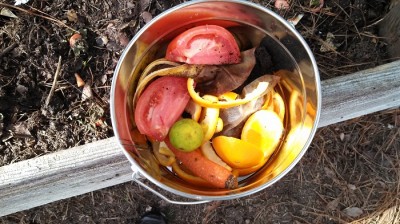
Image source: SanctuaryGardener
Alternative energy sources are extremely important, particularly if they are versatile. Even people who aren’t off grid should have a backup source in which they can rely in case of power outages or other emergencies.
One source to consider: biogas. Biogas is still somewhat unheard of in many parts of the United States and Canada, although it is quite popular and successful in Third World countries. The amazing thing about biogas is its versatility: simple set-up and the bonus of free fertilizer. Let’s take a better look at how biogas works and why it’s suitable for a homestead setting.
What is Biogas?
Biogas is a natural gas (methane and carbon dioxide) created when organic material, like manure, wasted food, animal products, etc., are anaerobically digested by microorganisms. This only occurs when there is an absence of oxygen. You can think of this process similar to how a cow’s stomach might work when it breaks down vegetation. In fact, the process of creating biogas naturally occurs in nature, whether it’s a digestive system or a marsh.
The process in which biogas is created is simple — so simple that many people think it’s too good to be true. In essence you just combine a liquid (water) with solid organic waste in a digester. Biogas has been proven repeatedly to be an amazing natural, sustainable fuel source that requires low maintenance and not a whole lot of knowledge to safely use.
New “Sun Magic” Solar Oven Is So Fast It’s Been Dubbed “Mother Nature’s Microwave”
Aside from the advantages listed above, other benefits of biogas include:
- Can be used for cooking or electricity.
- Is (generally) free.
- Produces no smell or smoke when used to cook.
- Saves labor and time.
- Produces free fertilizer.
The only real cost is materials to build a digester.
How Can Biogas Be Used For Fuel?
Biogas can be used for cooking or electricity. There are others uses, but for the sake of homestead life, these aren’t worth mentioning as they wouldn’t be efficient to use. If you are curious about commercial or larger scale uses of biogas, a Google search will help you.
The easiest and arguably the most efficient way to utilize biogas is to use it as you would with, say, propane. Even a very small digester could produce enough gas to cook on a medium/high settings for a couple of hours. There are stovetops on the market that can be hooked right up to your biogas and used right away. Aside from cooking, biogas is also efficient fuel for heaters, especially water heaters. For people who live off the grid, biogas has many benefits.
You can use biogas to make electricity, but it is more complex. Biogas can be used to run generators to power equipment; however, you would need a very large digester to run a whole house. For that reason, it would simply be a waste of energy and resources when you could use a gas-powered generator, solar panels or another method.
New Survival Seed Bank™ Lets You Plant A Full Acre Crisis Garden!
But for cooking and heating, biogas works.
More About Digesters
The biogas digester is the container in which the anaerobic digestion takes place. Think of it as the stomach. The bacteria in this container break down the manure or other organic matter, which releases the biogas. Many farmers around the world already use a type of digester to break down manure and reduce smell, but this end product is generally used as a fertilizer. Farmers in less-developed countries soon realized that the methane byproduct could be captured and used as an energy source after changing the way the manure digesters functioned.
Large commercial digesters can be enormous. One dairy farm uses a 600,000 gallon digester to take care of the manure of 1,000 dairy cows. Obviously, this is nothing like what a homesteader would need but it’s worth mentioning to show just how versatile biogas can be. Families in small Third World villages can use the manure from their one family milk cow to produce enough biogas every day for cooking and heating water.
DIY Digester Builds
Digesters themselves really come in any size or shape that the builder requires. Some may be as simple as a giant rubber bag, to an IBC tote or even permanent solid structures. Whichever the build, the top of the digester must be plastic so it can expand to the pressure of the forming gas. The most common larger scale farm digesters in the US are concrete tanks with a plastic cover.
There are tons of different DIY builds available on the Internet. Following are a few links, but it’s recommended that you do your own research to really understand the subject.
Good luck!
Do you have any biogas tips? Leave your reply in the section below:
 Off The Grid News Better Ideas For Off The Grid Living
Off The Grid News Better Ideas For Off The Grid Living




